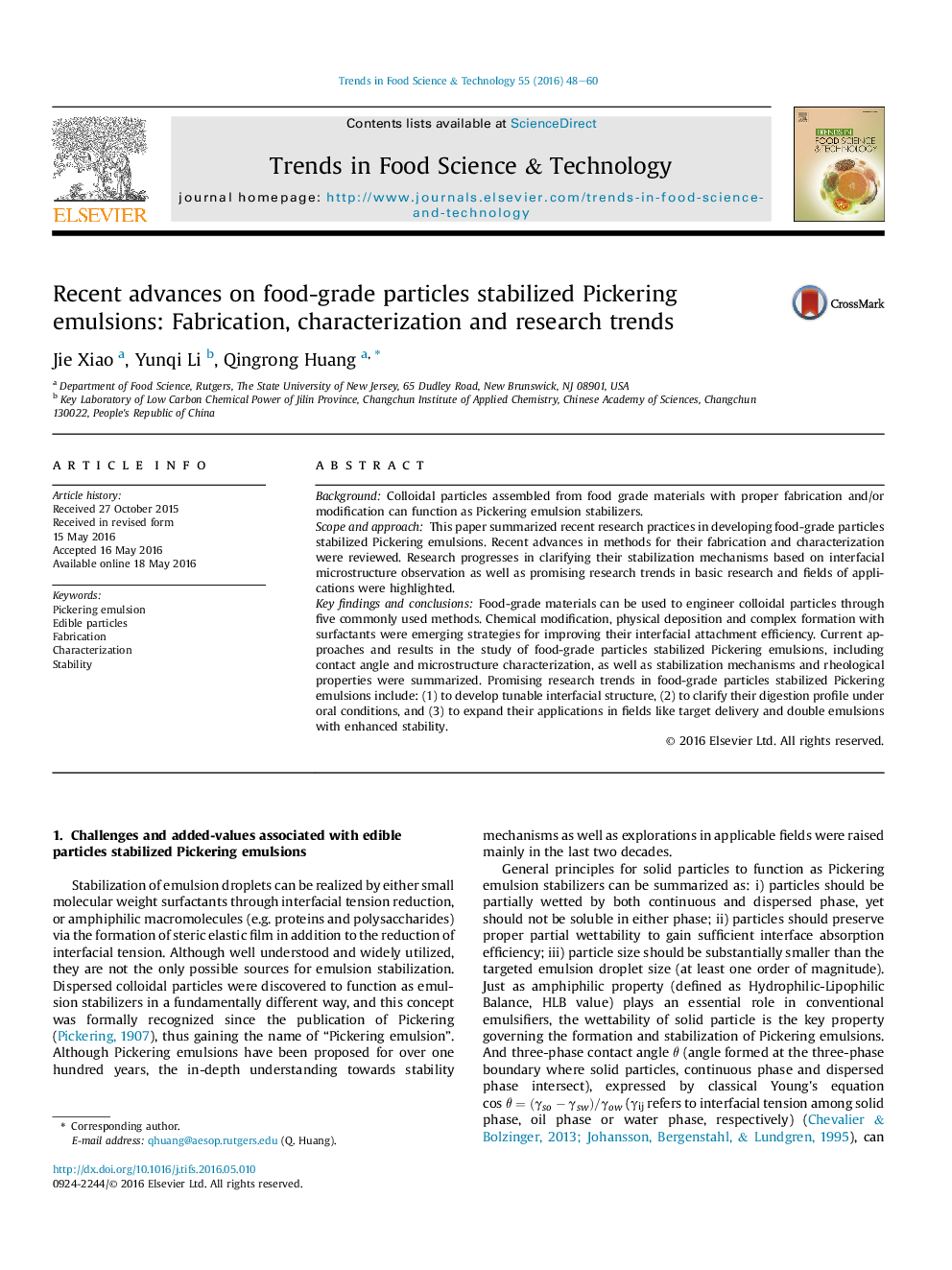| Article ID | Journal | Published Year | Pages | File Type |
|---|---|---|---|---|
| 2098478 | Trends in Food Science & Technology | 2016 | 13 Pages |
•Challenges and prospects coexist for edible particles based Pickering emulsions.•Methods of manipulating edible particles for Pickering emulsions were reviewed.•Characterization of edible particles stabilized Pickering emulsions was described.•Research trends in food grade particles stabilized emulsions have been proposed.
BackgroundColloidal particles assembled from food grade materials with proper fabrication and/or modification can function as Pickering emulsion stabilizers.Scope and approachThis paper summarized recent research practices in developing food-grade particles stabilized Pickering emulsions. Recent advances in methods for their fabrication and characterization were reviewed. Research progresses in clarifying their stabilization mechanisms based on interfacial microstructure observation as well as promising research trends in basic research and fields of applications were highlighted.Key findings and conclusionsFood-grade materials can be used to engineer colloidal particles through five commonly used methods. Chemical modification, physical deposition and complex formation with surfactants were emerging strategies for improving their interfacial attachment efficiency. Current approaches and results in the study of food-grade particles stabilized Pickering emulsions, including contact angle and microstructure characterization, as well as stabilization mechanisms and rheological properties were summarized. Promising research trends in food-grade particles stabilized Pickering emulsions include: (1) to develop tunable interfacial structure, (2) to clarify their digestion profile under oral conditions, and (3) to expand their applications in fields like target delivery and double emulsions with enhanced stability.
